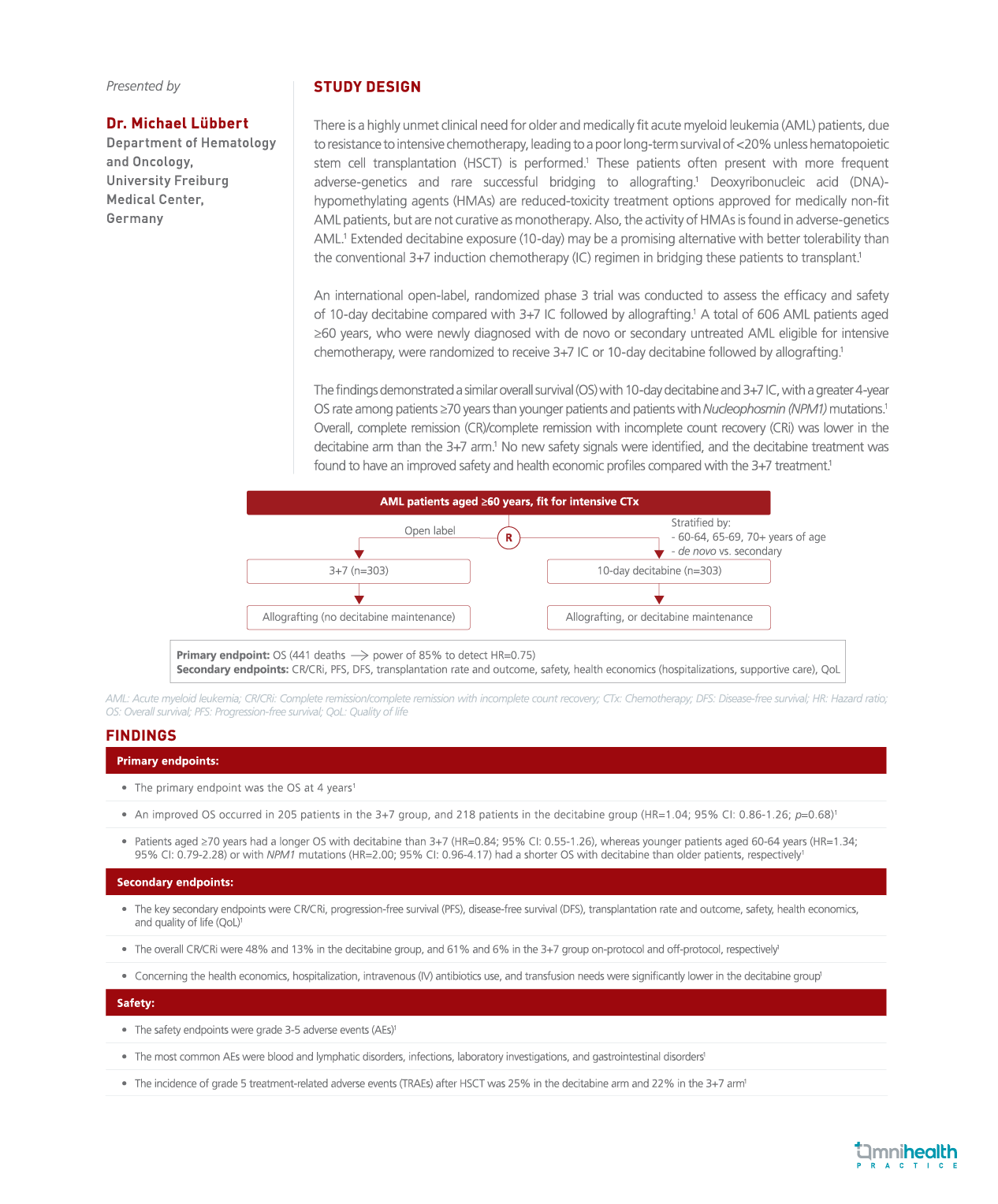Acute myeloid leukemia (AML) is a common malignancy among the adult population and is often associated with poor prognosis.1 Somatic mutation of the isocitrate dehydrogenase 1 (IDH1) gene, which induces excessive production and accumulation of oncometabolite D-2-hydroxyglutarate (2-HG), causes oncogenesis among 6%-10% of AML patients.1 However, due to limited treatment alternatives, there is an imminent need of curative treatments for the difficultto- treat subgroup of AML patients with IDH1 mutations.
Based on the conclusive findings of a global, randomized (1:1), double-blind phase 3 study of AGILE, a combination therapy of ivosidenib (IVO) + azacitidine (AZA), which inhibits the mutation of IDH1 enzyme, improved the overall survival (OS) rate in newly diagnosed AML patients, who are ineligible for standard therapy due to being ≥75 years and having comorbidities that restrict them from receiving intensive chemotherapy.1 Patients assigned to the IVO arm received IVO + AZA, meanwhile, patients assigned to the placebo arm received placebo + AZA.1
The statistical results of the study were favorable towards the combination of IVO + AZA. The event-free survival (EFS) rate in the intention-to-treat population (ITT) was significantly higher in the IVO arm, and about 37.5% of patients achieved complete remission (CR) after 24 weeks. The median OS with IVO + AZA was 24 months, which was 3 times longer than the placebo arm (24.0 months vs. 7.9 months).1 The clinical response, efficiency and safety profile were palpably favorable towards the combination therapy of IVO + AZA given to the difficult-to-treat AML patients with mutant IDH1 (mIDH1).1

